Fortinet NSE7_EFW-7.0 Fortinet NSE 7 - Enterprise Firewall 7.0 Exam Practice Test
Fortinet NSE 7 - Enterprise Firewall 7.0 Questions and Answers
Examine the following traffic log; then answer the question below.
date-20xx-02-01 time=19:52:01 devname=master device_id="xxxxxxx" log_id=0100020007 type=event subtype=system pri critical vd=root service=kemel status=failure msg="NAT port is exhausted."
What does the log mean?
Refer to exhibit, which contains the output of a BGP debug command.
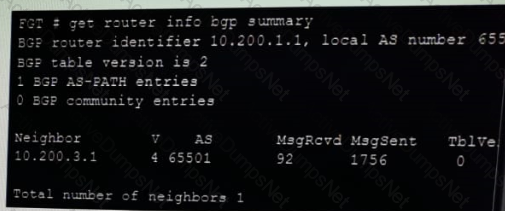
Which statement explains why the state of the 10.200.3.1 peer is Connect?
Which statement about the designated router (DR) and backup designated router (BDR) in an OSPF multi-access network is true?
An administrator is running the following sniffer in a FortiGate:
diagnose sniffer packet any “host 10.0.2.10” 2
What information is included in the output of the sniffer? (Choose two.)
Refer to the exhibit, which shows the output of a BGP debug command.

What can be concluded about the router in this scenario?
Examine the partial output from the IKE real time debug shown in the exhibit; then answer the question below.
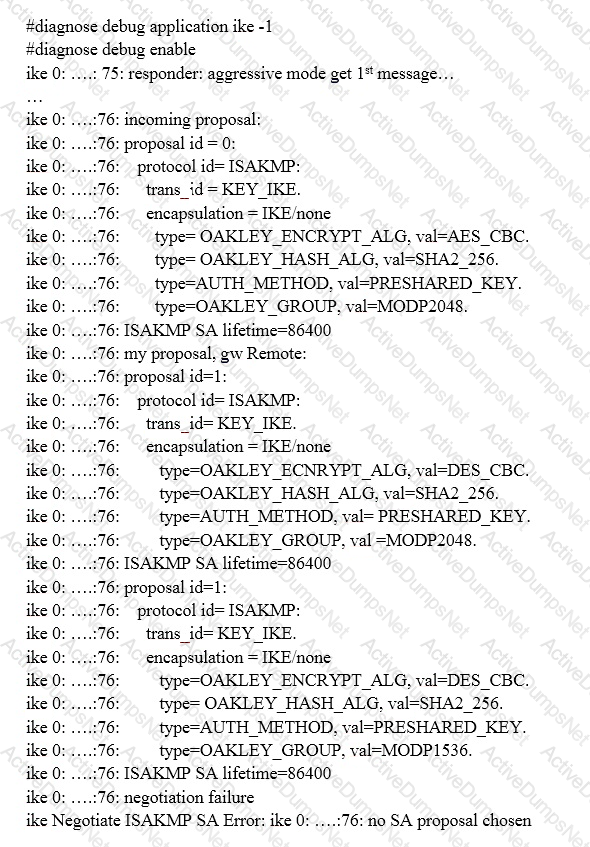
Why didn’t the tunnel come up?
Refer to the exhibit, which contains the output of the diagnose vpn tunnel list.
Which command will capture ESP traffic for the VPN named DialUp_0?
Refer to the exhibits, which show the configuration on FortiGate and partial session information for internet traffic from a user on the internal network.
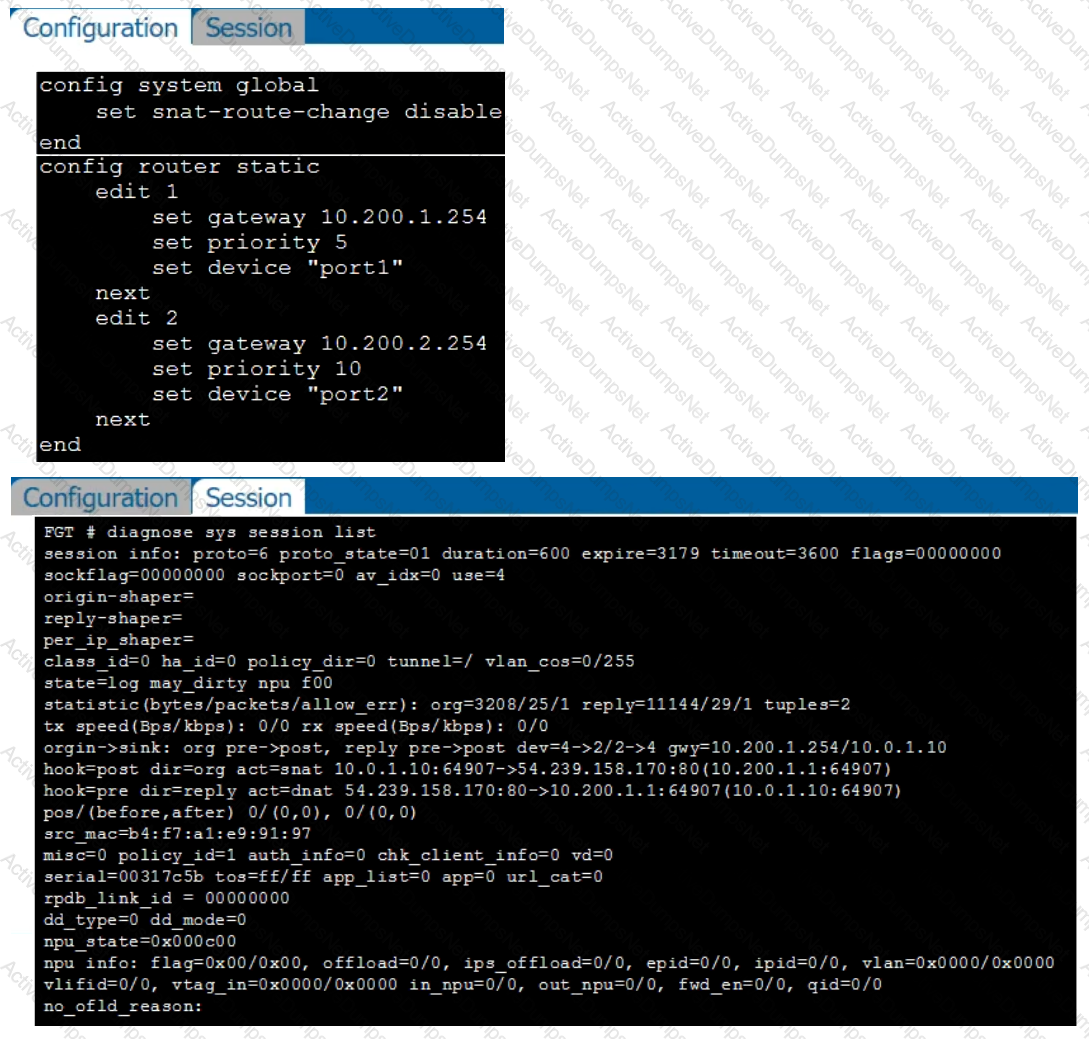
If the priority on route ID 2 were changed from 10 to 0, what would happen to traffic matching that user session?
View the exhibit, which contains the output of a diagnose command, and then answer the question below.
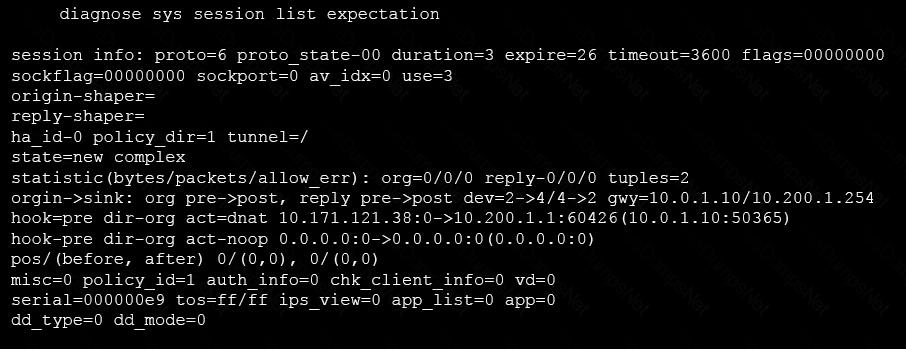
What statements are correct regarding the output? (Choose two.)
Examine the output of the ‘diagnose sys session list expectation’ command shown in the exhibit; than answer the question below.
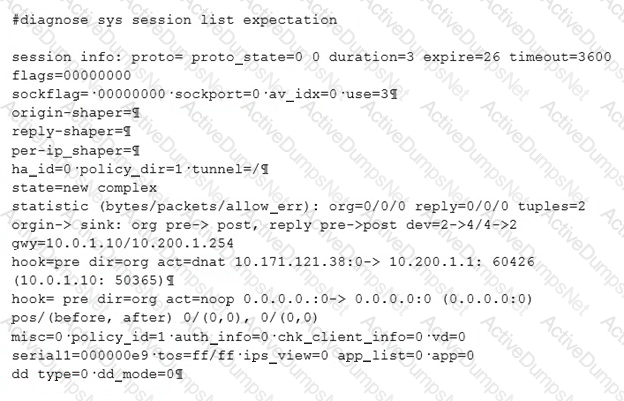
Which statement is true regarding the session in the exhibit?
Which two statements about conserve mode are true? (Choose two.)
View the global IPS configuration, and then answer the question below.
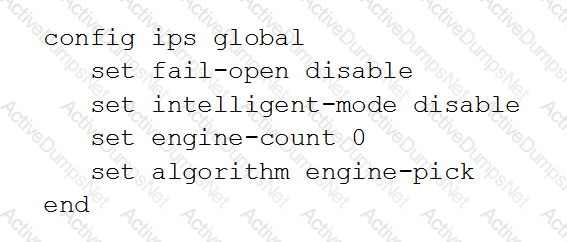
Which of the following statements is true regarding this configuration?
Examine the output of the ‘get router info bgp summary’ command shown in the exhibit; then answer the question below.
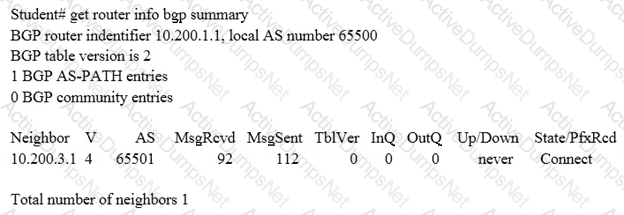
Which statement can explain why the state of the remote BGP peer 10.200.3.1 is Connect?
Refer to the exhibit, which shows a partial web filter profile configuration.

Which action will FortiGate take if a user attempts to access www.dropbox.com, which is categorized as File Sharing and Storage?
What is the purpose of an internal segmentation firewall (ISFW)?
Refer to the exhibit, which shows the output of a debug command.
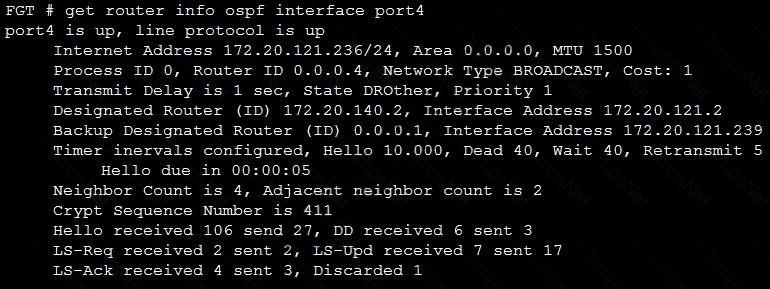
Which two statements about the output are true? (Choose two.)
Which two statements about bulk configuration changes made using FortiManager CLI scripts are correct? (Choose two.)
Examine the partial output from two web filter debug commands; then answer the question below:

Based on the above outputs, which is the FortiGuard web filter category for the web site www.fgt99.com?
View the exhibit, which contains the output of a diagnose command, and then answer the question below.

Which statements are true regarding the output in the exhibit? (Choose two.)
View the exhibit, which contains the output of a BGP debug command, and then answer the question below.

Which of the following statements about the exhibit are true? (Choose two.)
Which the following events can trigger the election of a new primary unit in a HA cluster? (Choose two.)
An administrator has decreased all the TCP session timers to optimize the FortiGate memory usage. However, after the changes, one network application started to have problems. During the troubleshooting, the administrator noticed that the FortiGate deletes the sessions after the clients send the SYN packets, and before the arrival of the SYN/ACKs. When the SYN/ACK packets arrive to the FortiGate, the unit has already deleted the respective sessions. Which TCP session timer must be increased to fix this problem?
What does the dirty flag mean in a FortiGate session configured for NGFW policy mode?
A FortiGate is configured as an explicit web proxy. Clients using this web proxy are reposting DNS errors when accessing any website. The administrator executes the following debug commands and observes that the n-dns-timeout counter is increasing:

What should the administrator check to fix the problem?
